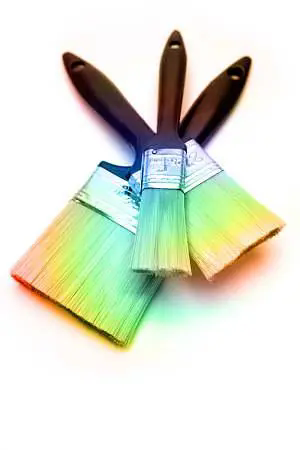The Relationship Between Paint Brush Size and Paint Consumption: A Practical Analysis
Choosing the right paint brush size directly impacts both the efficiency of paint application and the total volume of material required. While larger brushes cover more area per stroke, smaller brushes allow for precision in tight spaces. Understanding how brush dimensions influence paint usage helps optimize costs and reduce waste during projects.

Surface Coverage and Paint Efficiency
The width of a paint brush determines its coverage capacity per stroke. A 3-inch (7.5 cm) brush, for example, can coat approximately 1.5 square feet (0.14 m²) of flat surface in a single pass, while a 1-inch (2.5 cm) brush covers about 0.3 square feet (0.03 m²). This means larger brushes reduce the number of strokes needed for expansive areas like walls or ceilings, minimizing labor time and paint overuse.
However, overestimating brush size can lead to inefficiencies. Using a 4-inch brush on narrow trim may cause paint to spill onto adjacent surfaces, requiring touch-ups that increase total consumption. Conversely, a 2-inch brush on a large wall demands more strokes, potentially doubling the time and paint volume compared to a wider tool. Balancing brush size with surface dimensions ensures optimal coverage without excess material use.
Precision Work and Material Waste
Smaller brushes excel in detailed tasks, such as painting window frames, door edges, or intricate moldings. Their narrow profiles allow controlled application, reducing the risk of errors that lead to rework. For instance, a 1-inch brush can navigate the 0.5-inch (1.3 cm) gap between a wall and a window sill without dripping, whereas a wider brush might force multiple corrections.
In scenarios like furniture restoration or cabinetry, precision brushes prevent paint pooling in recessed areas. A 1.5-inch angled brush can coat the grooves of a panel door with minimal waste, as opposed to a flat 3-inch brush that might smear paint beyond the intended lines. Studies show that detailed projects using appropriately sized brushes reduce paint waste by up to 20% compared to mismatched tools.
Impact of Brush Type on Coating Thickness
The bristle material and stiffness of a brush also influence paint consumption. Synthetic brushes (nylon or polyester) work well with water-based paints, as they maintain flexibility and prevent clumping. Natural bristle brushes, ideal for oil-based paints, hold more material but may release excess if pressed too firmly, increasing usage.
For example, a stiff 2-inch natural bristle brush applying oil-based primer might deposit 0.3 liters per square meter, while a softer synthetic brush could achieve the same coverage with 0.25 liters. The choice of brush type thus affects not only the volume needed but also the number of coats required. Thicker brushes may leave uneven layers, necessitating additional applications, whereas properly matched tools ensure single-coat coverage.
Environmental and Structural Factors
The condition of the surface being painted also plays a role. Rough or porous substrates, like unfinished wood or textured walls, absorb more paint, requiring brushes that can hold and distribute material evenly. A 3-inch brush with dense bristles may apply 15% more paint to a rough surface than a smooth one, as the tool compensates for absorption.
In confined spaces, such as behind radiators or inside cabinets, the maneuverability of a brush affects consumption. A 1-inch flexible brush can reach recessed areas without disassembling fixtures, avoiding the need for multiple tools or excessive paint application. Conversely, using a rigid 2-inch brush in such spaces may force repeated attempts, doubling material use.
Final Considerations
Selecting the right paint brush size involves evaluating surface area, detail requirements, and material properties. Larger brushes suit expansive, flat surfaces, while smaller tools optimize precision and reduce waste in detailed work. By aligning brush dimensions with project needs, painters can achieve professional results with minimal material consumption, ensuring both cost-effectiveness and environmental sustainability.
